Train of thought: artists Langlands & Bell celebrate Frank Pick’s design philosophy

Artists Ben Langlands and Nikki Bell grew up commuting on the Tube. So the London-based duo were well placed to pay homage to London Underground visionary, Frank Pick, 75 years after his death, for an Art on the Underground commission at the newly refurbished Piccadilly Circus station.
'We were given free reign of the Transport Museum archives in Acton,' Langlands explained prior to the public artwork's unveiling. 'We went through Pick's personal papers, and stumbled across a beautiful equation scrawled in the margins. Two columns of four words, each connected by backwards arrows: Beauty, Immortality, Utility, Perfection. Goodness, Righteousness, Truth, Wisdom.'
He adds, 'As soon as we saw this little note, no more than a doodle, we knew that Pick was a true pioneer; somebody who really knew that changing your surroundings can change your life.' Pick's eight, almost forgotten words form the basis of the new commission. Unveiled today, it stands on the arching outer wall of Piccadilly Circus, where astute commuters will remember a bank of now obsolete phone boxes once stood.

A station roundel has been updated in homage to its designer, Frank Pick.
Pick, a solicitor turned transport administrator, turned design buff, had a knack for knowing how talented creative practitioners (Harry Beck, Edward Johnston, Charles Holden, Man Ray) could best serve the city. Be it through the 1931 tube map design, building new stations, or revolutionising transport branding. Langlands & Bell celebrate this pioneering design acumen by using two renowned symbols Pick was instrumental in bringing to fruition: the Johnstons Typeface which he commissioned in 1913, and the reworked roundel which followed in 1917. The 2m high bronze letters – a new material for Langlands & Bell – are appended by the iconic roundel with 'Frank Pick' proudly stamped inside.
The project has taken about a year, although the wheels were set in motion four years ago, when the former Turner Prize nominees were first approached by the London Transport Museum. 'We could immediately identify with the whole context of the project', Langlands explains. 'Piccadilly Circus is the heart of the city - the site is iconic. But it was Pick's intuitive idealism that was most important to us.' The more the duo researched, the more they uncovered about the man the London Transport Museum is calling 'a forgotten hero'. As with many exceptional people, there was an air of loneliness around him. Langlands explains, 'He was a quiet guy. Socially awkward. Some people found him arrogant – but he was bright and brilliant. With our installation, we're giving Pick his words back.'
Langlands & Bell discovered that Pick had hastily jotted down the eight-word mantra as he waited to deliver a speech as London Underground’s first chief executive, a position he found himself in 'almost by accident', with no formal transport training, and no background in design. Perhaps the hurried scrawling was nothing more than a pre-speech pep talk to himself, never intended to be seen by anyone else. Perhaps it was more than that – a powerful personal philosophy, that we can all learn from on our morning commute, from the man who had the foresight to intertwine London's infrastructure with design.
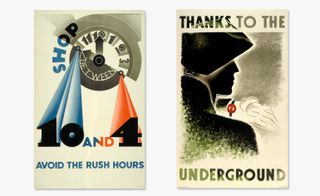
When Pick was given responsibility for London Underground's publicity in 1908, he recognised the potential of graphic posters and commissioned artists to reinvent TfL’s corporate identity. Pictured left, Shop between 10 and 4, by Edward McKnight Kauffer, 1947. Right, Thanks to the Underground, by Zero (Hans Schleger), 1935. Courtesy of TFL and the London Transport Museum
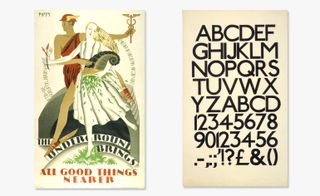
Left, Underground brings all things nearer, by Dora M Batty, 1932. Right, Edward Johnston's iconic Underground typeface, 1940. Courtesy of TFL and the London Transport Museum
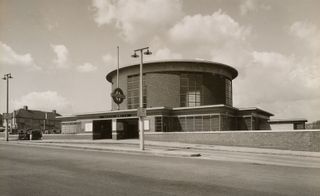
Built in 1935, the Arnos Grove Underground station on the Piccadilly line was designed by architect Charles Holden under the direction of Pick.
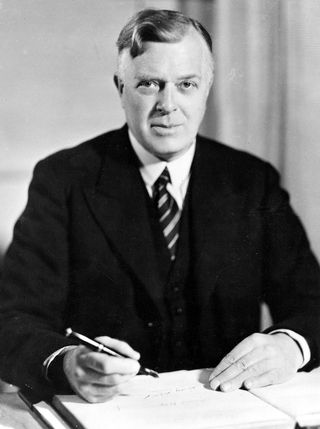
Pick at his desk, 1939. Courtesy of TFL and the London Transport Museum
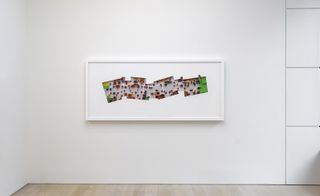
Information
Beauty Immortality is on view at Piccadilly Circus station. For more information, visit the Art on the Underground website
Address
Piccadilly Circus
London W1J 9HP
Wallpaper* Newsletter
Receive our daily digest of inspiration, escapism and design stories from around the world direct to your inbox
Elly Parsons is the Digital Editor of Wallpaper*, where she oversees Wallpaper.com and its social platforms. She has been with the brand since 2015 in various roles, spending time as digital writer – specialising in art, technology and contemporary culture – and as deputy digital editor. She was shortlisted for a PPA Award in 2017, has written extensively for many publications, and has contributed to three books. She is a guest lecturer in digital journalism at Goldsmiths University, London, where she also holds a masters degree in creative writing. Now, her main areas of expertise include content strategy, audience engagement, and social media.
-
 Serenade your senses at Farasha Farmhouse in Marrakech
Serenade your senses at Farasha Farmhouse in MarrakechFarasha Farmhouse is a serene escape hidden on the outer reaches of Marrakech
By Nicola Chilton Published
-
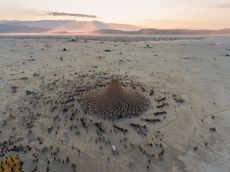 ‘Bio-spaces’ exhibition at Roca London Gallery celebrates biophilic design
‘Bio-spaces’ exhibition at Roca London Gallery celebrates biophilic design‘Bio-Spaces: regenerative, resilient futures’ opens at the Roca London Gallery as ‘a call to action to stop designing nature out’
By Clare Dowdy Published
-
 Les Lalanne’s surreal world takes over Venice
Les Lalanne’s surreal world takes over Venice‘Planète Lalanne’, presented by Ben Brown Fine Arts, takes over Palazzo Rota Ivancich, with a cast of blue hippos, woolly sheep and giant grasshoppers
By Hannah Silver Published
-
 The best London art exhibitions to see now
The best London art exhibitions to see nowYour guide to the best London art exhibitions, as chosen by the Wallpaper* arts desk
By Hannah Silver Published
-
 Remote Antarctica research base now houses a striking new art installation
Remote Antarctica research base now houses a striking new art installationIn Antarctica, Kyiv-based architecture studio Balbek Bureau has unveiled ‘Home. Memories’, a poignant art installation at the remote, penguin-inhabited Vernadsky Research Base
By Harriet Lloyd-Smith Published
-
 Ryoji Ikeda and Grönlund-Nisunen saturate Berlin gallery in sound, vision and visceral sensation
Ryoji Ikeda and Grönlund-Nisunen saturate Berlin gallery in sound, vision and visceral sensationAt Esther Schipper gallery Berlin, artists Ryoji Ikeda and Grönlund-Nisunen draw on the elemental forces of sound and light in a meditative and disorienting joint exhibition
By Harriet Lloyd-Smith Published
-
 Cecilia Vicuña’s ‘Brain Forest Quipu’ wins Best Art Installation in the 2023 Wallpaper* Design Awards
Cecilia Vicuña’s ‘Brain Forest Quipu’ wins Best Art Installation in the 2023 Wallpaper* Design AwardsBrain Forest Quipu, Cecilia Vicuña's Hyundai Commission at Tate Modern, has been crowned 'Best Art Installation' in the 2023 Wallpaper* Design Awards
By Harriet Lloyd-Smith Published
-
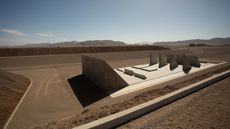 Michael Heizer’s Nevada ‘City’: the land art masterpiece that took 50 years to conceive
Michael Heizer’s Nevada ‘City’: the land art masterpiece that took 50 years to conceiveMichael Heizer’s City in the Nevada Desert (1972-2022) has been awarded ‘Best eighth wonder’ in the 2023 Wallpaper* design awards. We explore how this staggering example of land art came to be
By Harriet Lloyd-Smith Published
-
 Cerith Wyn Evans: ‘I love nothing more than neon in direct sunlight. It’s heartbreakingly beautiful’
Cerith Wyn Evans: ‘I love nothing more than neon in direct sunlight. It’s heartbreakingly beautiful’Cerith Wyn Evans reflects on his largest show in the UK to date, at Mostyn, Wales – a multisensory, neon-charged fantasia of mind, body and language
By Harriet Lloyd-Smith Published
-
 The best 7 Christmas installations in London for art lovers
The best 7 Christmas installations in London for art loversAs London decks its halls for the festive season, explore our pick of the best Christmas installations for the art-, design- and fashion-minded
By Harriet Lloyd-Smith Published
-
 Rafael Lozano-Hemmer’s Pulse Topology in Miami is powered by heartbeats
Rafael Lozano-Hemmer’s Pulse Topology in Miami is powered by heartbeatsRafael Lozano-Hemmer brings heart and human connection to Miami Art Week 2022 with Pulse Topology, an interactive light installation at Superblue Miami in collaboration with BMW i
By Fiona Mahon Last updated